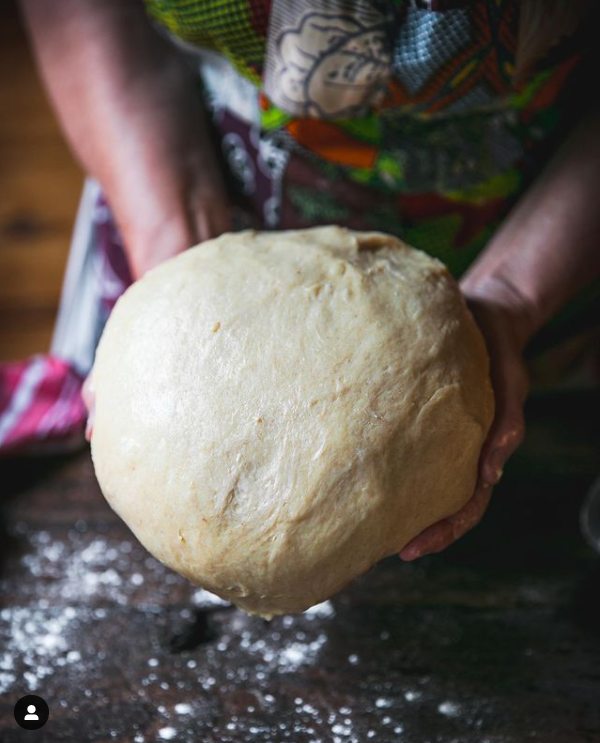7 Tips to Make Restaurant-Style Pizza at Home

There’s really something special about pizza from a restaurant—but what actually makes the difference?
While having a team of professional chefs certainly helps, most of the difference comes down to the pizza itself: From homemade dough to top-quality ingredients, most of what goes into a restaurant-quality pizza is probably already in your pantry! With a little hard work and a few special tools and techniques, almost anyone can make restaurant-style pizza at home.
1. Make Your Own Dough
The foundation of any good pizza is literally the foundation of the pizza itself: the crust! While you can get by using store-bought dough and crust, making your own dough and tossing your own crust always delivers a superior product.
While making your own dough takes a little practice, it’s ultimately cheaper and easier to make than many would think. An authentic pizza dough requires only flour, yeast, water, oil, and salt as ingredients, plus a little patience and some practice tossing pizza dough. It may take a couple of tries to get it right, but, once you get the hang of it, you’ll never look at premade pizza dough again!
2. Splurge on Good Cheese and Toppings
Great ingredients always result in a great pizza, even if the preparation is less than perfect. Plus, with a keen eye and some savvy shopping at farmers markets and co-ops, you can often get great deals on local produce. No matter where you shop, however, shopping by the season is a great way to get the best-quality ingredients at the best prices.
When it comes to pizza, two ingredients are the most crucial: cheese and sauce. Spend a little money on whole cheese and grind it yourself whenever possible—or, better yet, make your own mozzarella! You may also want to try making homemade pizza sauce by simmering authentic San Marzano tomatoes with garlic and fresh herbs.
3. Don’t Over-Sauce Your Pizza
Speaking of pizza sauce, a little goes a long way! While you definitely want an even coverage of sauce, spreading too much can quickly lead to a soggy, underdone crust. Instead, apply only a thin layer of sauce that just barely covers the pizza, leaving an inch or two of crust exposed along the outer edge.
What if you still want a lot of sauce, such as what you’d find in a Chicago deep-dish or Sicilian pizza? In that case, you’ll need to prepare a stronger and heartier crust, such as the thick focaccia used in Sicilian pizza. For thinner crusts, pre-baking can also help prevent sogginess.
4. Go Light on Toppings

Like with, less is more when it comes to toppings. To many people’s surprise, it’s simplicity in toppings that makes restaurant-style pizzas so great.
Consider, for example, the traditional Margherita pizza from Naples, consisting of a crust topped with a simple sauce, a few slices of fresh mozzarella, basil, and a drizzle of olive oil. Though incredibly simple, it’s also incredibly tasty, thanks to top-quality ingredients given enough room to cook through. By contrast, if you load up on toppings, some toppings might not have direct exposure to heat, resulting in a soggy, underdone pizza.
5. Preheat Your Pizza Stone
Whether you’re using a conventional oven or a pizza oven, a super-hot pizza stone is key to making restaurant-style pizza at home.
While pizza benefits from extremely high temperatures, you can still get great results from a conventional oven: Simply set the temperature to its highest setting, put your pizza stone in, and preheat for about an hour before cooking your pizza. Once you place your pizza in the oven, the preheated stone will cook the crust from the bottom, resulting in a perfectly crisp and chewy crust.
6. Use a Pizza Peel with Cornmeal
A pizza peel is essential for safely transferring pizza in and out of the oven. Unfortunately, new pizza cooks sometimes have difficulty getting their pizzas to slide on and off the peel without sticking!
While using a metal pizza peel is one way around this problem, lightly dusting your peel with cornmeal is the best way to help your pizza slide a little easier. Almost every restaurant uses cornmeal for this purpose, which is what gives restaurant-style pizza crusts their “grainy” texture underneath.
7. Cook at High Temperatures
More than anything else on this list, cooking at extremely high temperatures is the ultimate key to making restaurant-style pizza at home. Most pizza shops cook their pizzas between 700 and 800 degrees Fahrenheit, which quickly cooks the outer crust to a crisp while leaving the interior soft and chewy. While you might not be able to achieve these temperatures without a pizza oven, a conventional oven set to its maximum temperature can achieve similar results with help from a pizza stone.
Still, the only way to truly achieve restaurant-style pizza at home is to use an actual pizza oven. With a home pizza oven from Fontana Forni, you can make restaurant-quality pizza without investing in expensive and bulky commercial equipment. For more information on the Fontana Forni line of outdoor wood burning ovens and gas-fired home pizza ovens, explore our product page or call us at 877-842-9822.



